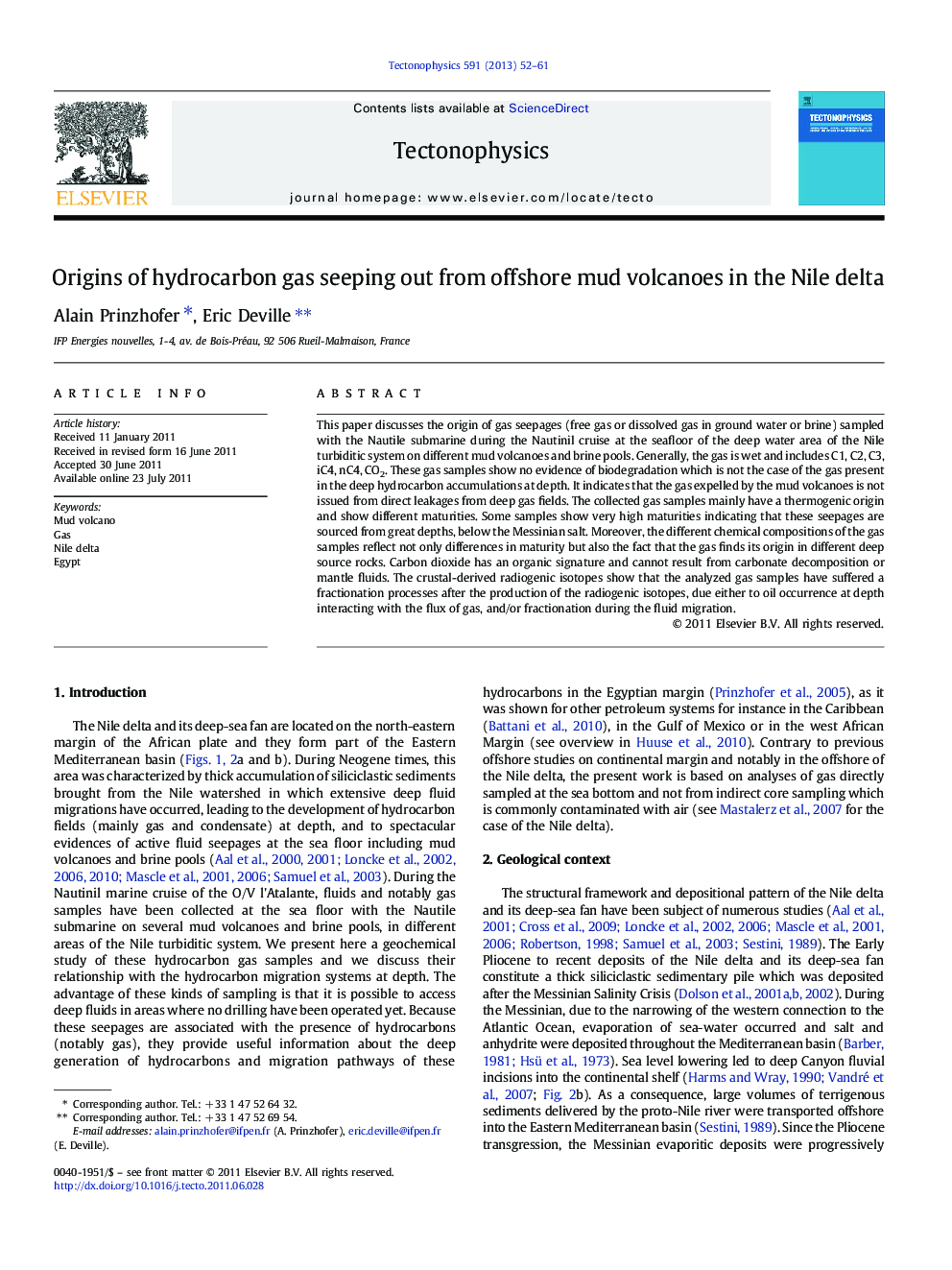| کد مقاله | کد نشریه | سال انتشار | مقاله انگلیسی | نسخه تمام متن |
|---|---|---|---|---|
| 4692415 | 1636794 | 2013 | 10 صفحه PDF | دانلود رایگان |
This paper discusses the origin of gas seepages (free gas or dissolved gas in ground water or brine) sampled with the Nautile submarine during the Nautinil cruise at the seafloor of the deep water area of the Nile turbiditic system on different mud volcanoes and brine pools. Generally, the gas is wet and includes C1, C2, C3, iC4, nC4, CO2. These gas samples show no evidence of biodegradation which is not the case of the gas present in the deep hydrocarbon accumulations at depth. It indicates that the gas expelled by the mud volcanoes is not issued from direct leakages from deep gas fields. The collected gas samples mainly have a thermogenic origin and show different maturities. Some samples show very high maturities indicating that these seepages are sourced from great depths, below the Messinian salt. Moreover, the different chemical compositions of the gas samples reflect not only differences in maturity but also the fact that the gas finds its origin in different deep source rocks. Carbon dioxide has an organic signature and cannot result from carbonate decomposition or mantle fluids. The crustal-derived radiogenic isotopes show that the analyzed gas samples have suffered a fractionation processes after the production of the radiogenic isotopes, due either to oil occurrence at depth interacting with the flux of gas, and/or fractionation during the fluid migration.
► Deep hydrocarbon-rich fluid seepages (free gas and brine rich in dissolved methane) are expelled by mud volcanoes in the eastern Mediterranean basin, notably in the Nile delta.
► Fluid seepage exploits deep fault systems and cross-cut the Messinian evaporitic formations.
► The hydrocarbons are mainly of thermogenic origin and some samples show very high maturities suggesting a very deep origin.
► The gas expelled by the mud volcanoes is not issued from direct leakages from deep gas fields but comes directly from several deep organic-rich rocks.
► The crustal derived radiogenic isotopes show that the analysed gas samples have suffered fractionation processes after the radiogenic isotope production due either to oil occurrence at depth interacting with the flux of gas, and/or fractionation during the fluid migration.
Journal: Tectonophysics - Volume 591, 8 April 2013, Pages 52–61
